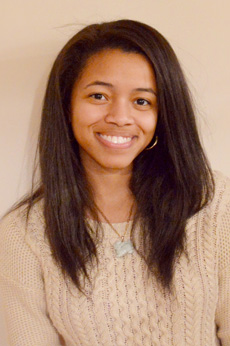Mathematics
“Empowering Occupational and Physical Therapists with Three-dimensional Printing Technology”

Standardized assistive technology provides minimal customizations for users and leads to ill-fit devices and user abandonment. Our goal is to use three-dimensional (3D) printing technology to empower therapists to create customizable and inexpensive assistive technology for patients. Therapists can use medical expertise to tailor adaptations to existing assistive technologies, but current efforts to customize assistive technology are limited to materials like tape, clay, Velcro, and foam padding. We plan to familiarize medical professionals with 3D printing to make highly specific modifications to assistive devices and provide them with software to make 3D models. We will train therapists to 3D print through a series classes. Through data collection methods such as surveys and interviews, we will formulate the user specifications for the software. Employing user requirements, we will develop a software using html, css, and github. Our project’s success will be determined by the adoption rate of this technology among therapists in hopes of decreasing user abandonment of assistive technologies. This project provides a potential solution to the problem of ill-fitting assistive devices through training physical therapists and students on the use of 3D printing technology and experience operating user-focused software for designing 3D printed assistive devices.
This project was part of a group project presented at URCAD 2016. The participants of this project were: Braxton Dubin, Niara Comrie, Samatha McDonald, Nicholas Carter.
What research experiences have you had?
My most recent project which was called “GripFab” was sponsored by Collaborative Research Experiences for Undergraduates (CREU). The goal of this project was to empower medical professionals and Ph.D. students to integrate three-dimensional (3D) printing into their field and to develop more user-friendly assistive devices. During the year-long project, I focused on the development of hand grips for long-term crutch users. In addition, I taught Ph.D. students at the University of Maryland School of Medicine the mechanics of 3D modeling and 3D printing. In three sessions, we showed the Ph.D. students the use of 3D printing in medicine, gave them a brief introduction to 3D modeling and 3D scanning, and assisted students with developing molds for creating assistive technology for their case studies.
How did you find this research opportunity?
In 2014, I started working on the GripFab project with one of the founders, Erin Buehler, who is an Information Systems Ph.D. student here at UMBC. Fellow undergraduate researchers and I wanted to extend and continue the GripFab project so as suggested by our faculty mentor Amy Hurst, we applied and received the CREU grant to continue our research.
Who is your mentor for your research project? How did you arrange to work with this person?
Our mentors were Amy Hurst and Erin Buehler from the Information Systems department. I work in the Prototyping and Design Lab (PAD) with them so we easily arranged to have meetings. We had weekly meetings with our mentors to update them on our progress and get suggestions.
Do you get course credit for this work? Paid? How much time do you put into it?
Yes, we got paid through our CREU grant. On average, we put about 20 hours a week.
What academic background did you have before you started?
I was a mechanical engineering major in entry level engineering classes.
How did you learn what you needed to know to be successful in this project?
My exposure in the disciplines of mechanical engineering helped me on this project. I read many books and research papers to help me understand how to 3D model and 3D print and I asked fellow researchers questions. I also researched different types of grips and brainstormed how they could be utilized more efficiently. I believe my interest in 3D printing and endless possibilities with 3D printing technology in medicine motivates me to keep learning more and digging deeper.
How does this research experience relate to your work in other classes?
My research work has given me invaluable experience which has allowed me to become a better teaching assistant for the past two semesters in IS 498 3DP. I teach an entrepreneurship class where I assist undergraduates and success students learn the mechanics of 3D printing and 3D modeling.
What is your advice to other students about getting involved in research?
If you have no experience, don’t be intimidated. The best way to learn is by doing. There are plenty people that will give you an opportunity if you are really adamant about doing the research work. If you are motivated you will find avenues (Google, advisors, people in the field) to help you navigate through the work. I did not have any experience with 3D printing prior to working at the PAD lab. Now, I have several publications and I am teaching professionals how to 3D print in their field. There are no limitations to what you can do.
8/19/2016